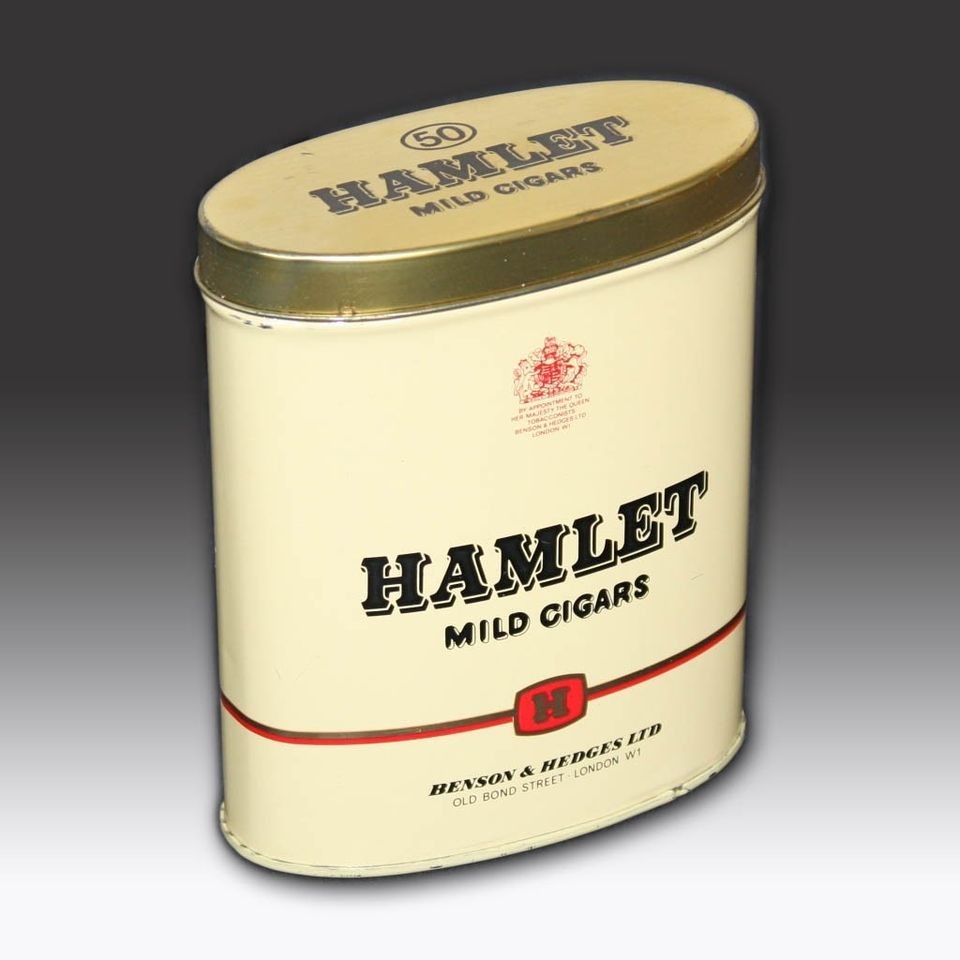Iconic Ads: Hamlet (Cigars) – Photobooth

Advertising for Hamlet helped it become the best selling cigar in the UK. Four out of every ten cigars sold was a Hamlet.
Tim Warriner and Roy Carruthers were sitting in their shared office on the fourth floor of Collett Dickenson Pearce’s Howland Street building in 1964, staring at a brief that asked for a television campaign for a new small cigar that was being launched by Benson & Hedges.
The brand was called Hamlet.
Tim and Roy were surrounded by the advertising creative geniuses of that time—Mike Savino, Arthur Parsons, John Reynolds, and Alan Brooking with the creative director, Colin Millward, who was the brightest star of all.
Usually, being surrounded by so much brilliance would be beneficial to the creative process, but that’s not always the case. The fierce rivalry restricted them. Tim and Roy need to get over their anxiety about failing and demonstrate that they have full trust in themselves. They have to make it a priority to execute one of the most successful campaigns of their whole lives. But the harder they tried, nothing came out of it.
Tim and Roy had been working on Hamlet for a few days, but they had not yet produced anything that could be called good.
It was after another dismal day, and as they went down the stairs of 18 Howland Street and made their way to the bus stop, it was pitch black, very cold, and pouring rain the whole time. This added to their already dismal mood.
When the double-decker bus came, they ascended the steps to reach the upper deck. During those times, passengers who smoked were only allowed on the upper decks of London buses. People could be seen smoking away on pipes and cigarettes alike on every available seat.
Tim and Roy were happy to finally be able to sit down and relax. They were also glad to be able to light up a cigarette, which they hadn’t been able to do while standing in the rain.
As the bus went by, they saw the Shultz cartoon character Charlie Brown featured on a billboard. After reading the wording on the poster, which started “Happiness is…”, Tim leaned back, took a moment to process, and then said, “Happiness is a dry cigarette on the top deck of a 134 bus.”
Soon after, the two of them concluded that if they rephrased what Tim had said as “Happiness is a cigar called Hamlet” and placed an appropriately humorous but unfavourable occurrence or circumstance in front of that line, they might have the advertising campaign that they had been searching for.
However, there is still another narrative.
One of the senior art directors at CDP, Vernon Howe, shared with a friend of his, Steve Harrison, that Tim Warriner had been attempting to sell the concept of “Happiness is…” to any customer who would have it. It so happened that Hamlet was the one to purchase it.
There is more excitement in the first one, though.
It was Colin Millward’s idea to provide the score for the Hamlet campaign; without it, the campaign simply would not be the same.
Colin had joined the Royal Air Force. Soon after the conclusion of the Second World War, he went to India, where he spent the subsequent six months living in a hut. The last person who lived in Colin’s apartment left him a phonograph with only one record in it.
The composition “Clair de Lune” by Debussy was included on one side of this album and Bach’s “Air on the G String” on the other. Colin thought of Bach’s music, and he suggested that it be used in the ads as background music.
In the year 1959, a French jazz musician by the name of Jacques Loussier established the group known as the “Play Bach Trio.” They released several albums under this name, and each one had a trio of piano, bass, and drums playing Bach’s music in a way that was not written down.
There was also a jazz rendition of the song “Air on a G String” among them, which became the background score.
The most popular film was the advertisement with Gregor Fisher in the photo booth in 1986.
Rowan Dean and Gary Horner, both part of the creative team at CDP, were watching the BBC show titled “Naked Video.”
In this skit, the character “Baldy Man,” who was created by comedian and actor Gregor Fisher, posed in a photo booth, but his attempts to get the perfect photograph were thwarted by a series of mishaps that culminated in the stool he was sitting on collapsing beneath him.
Rowan and Gary quickly saw the possibility of making it into a Hamlet advertisement, which they did as a matter of course.
There’s no way to get around the fact that it worked, and it became almost instantly the most famous Hamlet ad ever.
Reference



